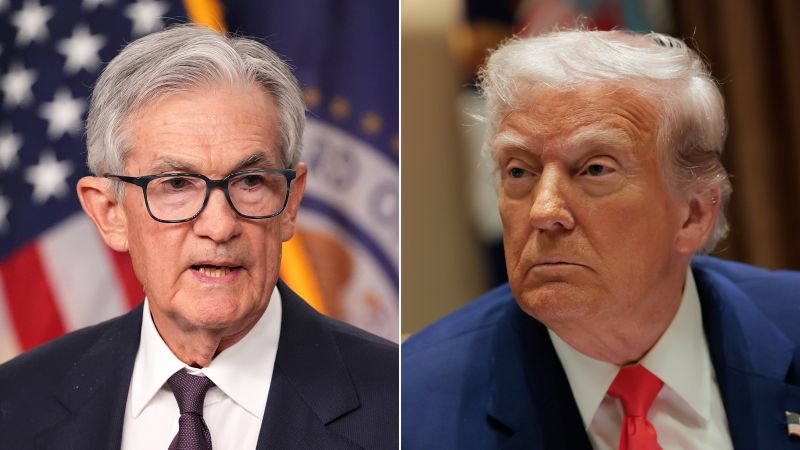On a recent Thursday, President Donald Trump launched a vehement and targeted assault on Federal Reserve Chairman Jerome Powell, vigorously advocating for an unprecedented interest rate cut of 2.5 percentage points. Trump, despite having appointed Powell to his position in 2017, has regularly expressed his frustration with the Fed’s interest rate policies. Over the years, he has criticized Powell for maintaining higher rates than he believes are beneficial for the U.S. economy. Trump’s most recent comments came after a Monetary Policy Committee meeting, where the Federal Reserve announced that it would be keeping the rate steady between 4.25% and 4.5%. This decision came against the backdrop of a strong economy yet uncertain inflation trajectories, partially attributed to tariffs imposed by Trump’s administration on various international goods.
In a post on Truth Social, Trump declared, “’Too Late’ Jerome Powell is costing our Country Hundreds of Billions of Dollars,” expressing belief that Powell is among the gravest threats to the health of the economy. He characterized Powell as one of the “dumbest” and most destructive figures in government, labeling the board of the Federal Reserve as complicit in this alleged economic mishap. The refrain “TOO LATE’s an American Disgrace!” underscored Trump’s conviction that immediate action must be taken to avert financial catastrophe.
A proposed cut of 2.5 points stands out as remarkably unorthodox within the historical practices of the Federal Reserve. Typically, adjustments to the benchmark lending rate occur in increments of a quarter of a point, each aligned with the current state of the economy. The central bank had previously increased rates by as much as three-quarters of a percentage point during instances of rampant inflation, a remarkable spike not seen in decades. Conversely, during economic downturns like the onset of the COVID-19 pandemic, the Fed has resorted to aggressive rate cuts.
Despite Trump’s vociferous critiques, Powell has consistently refrained from direct engagement with the President’s remarks. Instead, he emphasizes the Federal Reserve’s obligation to uphold a low inflation rate and foster job growth. In response to inquiries surrounding Trump’s potential nomination of a new Fed Chair when Powell’s term concludes next year, he reaffirmed his focus on current economic stability rather than speculation.
“From my standpoint, it’s not complicated,” Powell stated, asserting the Federal Open Market Committee’s primary aim of maintaining a robust American economy characterized by a strong labor market and price stability. He confidently articulated that the Fed’s current policy stance is adequately positioned to navigate present economic challenges.
Moreover, he commended the resilience of the U.S. economy, suggesting that its robustness is partly a reflection of the Fed’s operational strategies, providing it with the capability to react appropriately to significant developments in the economic landscape. Powell reiterated, “America’s economy has been resilient… pretty much that’s all that matters to us.”
Despite robust economic indicators, Fed projections indicate a likelihood of only two quarter-point rate reductions before the year ends, potentially lowering rates to between 3.75% and 4%. However, Trump’s discontent has persisted, notably contrasting the U.S. situation with Europe, which has enacted multiple cuts in the same timeframe. “We should be 2.5 Points lower,” Trump asserted, arguing that this adjustment would save billions on governmental short-term debt.
While inflation has remained moderate in the U.S., Powell cautioned against future price increases as businesses transition to selling goods affected by previously enacted tariffs. He elaborated on inflation trends, indicating a slight uptick for goods and warning that tariffs would need time to influence the market fully. “Today, the amount of the tariff effects… are all highly uncertain,” he noted, emphasizing the Fed’s decision to remain cautious until clearer data emerges.
In sum, the evolving dynamic between Trump and Powell highlights contrasting approaches to economic management, with Trump pushing for radical rate cuts to stimulate growth while Powell advocates a steadier approach in response to uncertain economic signals.



